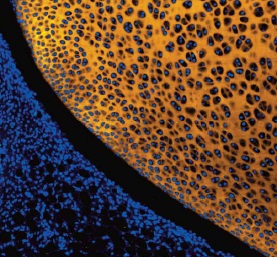 The aim of the EU funded project RESTORE is to treat osteoarthritis (OA) by generating functional cartilage through 3D bioprinting technology. A Swedish research team within RESTORE has now achieved a major scientific milestone in the treatment of OA; they have been able to generate functional cartilage tissue by 3D bioprinting chondrocytes into OA lesions.
The aim of the EU funded project RESTORE is to treat osteoarthritis (OA) by generating functional cartilage through 3D bioprinting technology. A Swedish research team within RESTORE has now achieved a major scientific milestone in the treatment of OA; they have been able to generate functional cartilage tissue by 3D bioprinting chondrocytes into OA lesions.
The study was recently published in the scientific journal CARTILAGE (Gatenholm, Lindahl, Brittberg, & Simonsson, 2020) and featured in a special report by Innovation News Network.
Three-dimensional (3D) bioprinting is able to combine cells with biomaterials and can be used as a tool to distribute cells and biomaterials in the shape of a cartilage lesion or osteoarthritic defect. In the study, first, an actual (OA) defect was scanned using magnetic resonance imaging (MRI), Computer Tomography (CT), microcomputer tomography (Micro-CT), and a 3D scanner. Out of the devices tested, only the 3D scanner could accurately detect the actual lesion area. The 3D model obtained was then used as a template for 3D bioprinting primary chondrocytes in the shape of a true lesion. The bioprinted chondrocytes formed cartilage tissue fragments and produced collagen IIA isoform type B, analysed by reverse transcription-polymerase chain reaction (RT-PCR), earlier proven to be exclusively found in articular cartilage. These levels were higher in the 3D bioprinted chondrocytes than in chondrocytes cultured in 3D micromass, suggesting 3D bioprinting supports cartilage formation better than classic micromass/pellet protocols. The 3D bioprinted chondrocytes also produced ACAN, which is a gene characteristic for articular cartilage.
The scientists showed that the bio-ink for 3D bioprinting supported the chondrocytes to produce mature articular cartilage. This is an important finding and could aid in designing the next generation scaffolds for articular cartilage injuries or OA when using ink in combination with OA combatting drugs. Such bio-inks with specific nanobiomaterials are under development in the RESTORE project, also.

















































































